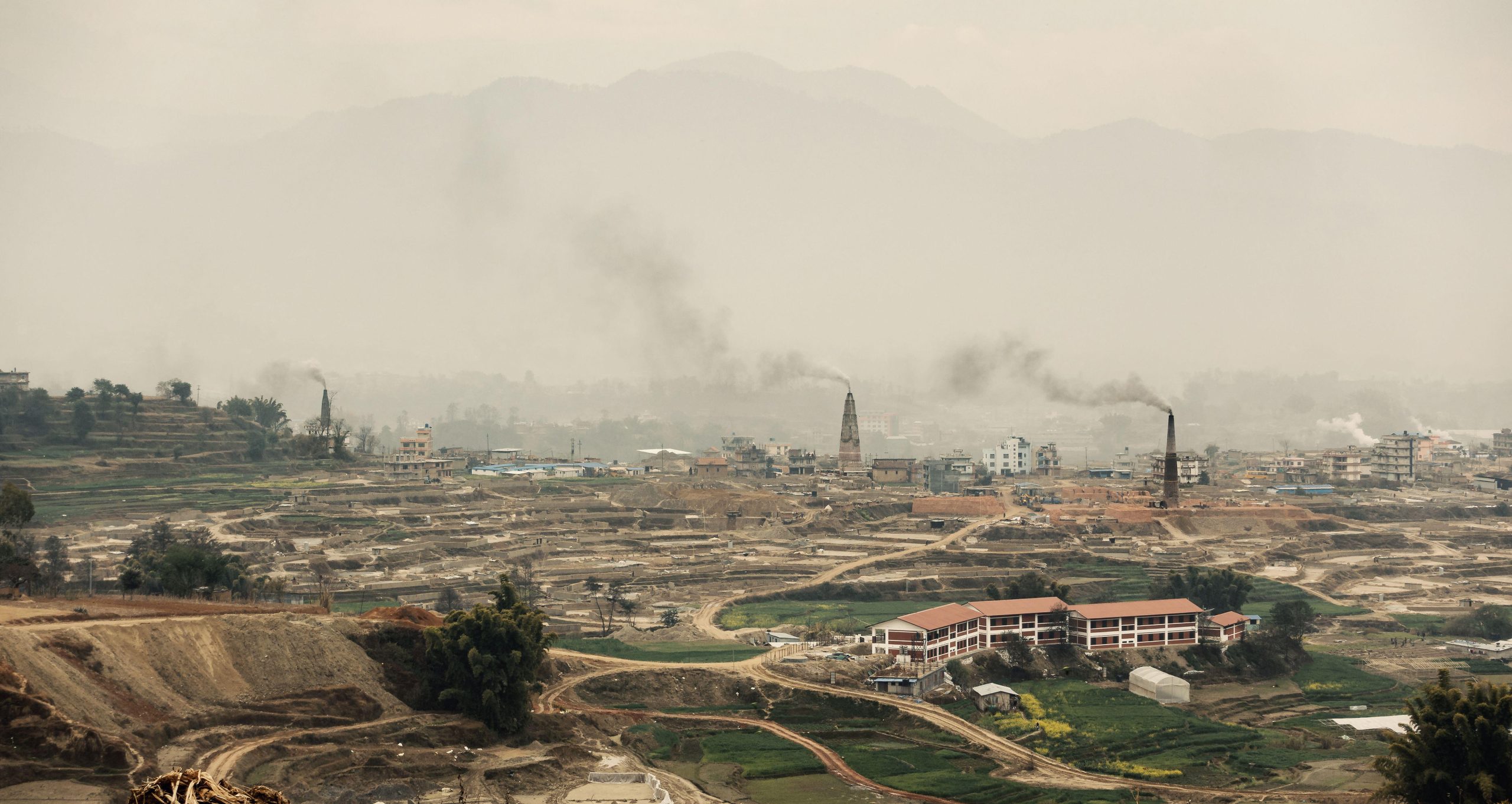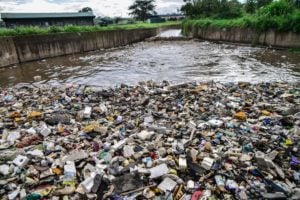In 2021, Nepal committed to achieving net-zero emissions by 2045 in its long-term strategy submitted to the UN Framework Convention on Climate Change. But so far, there is no clear roadmap on how this is to be done. The question of how to simultaneously pursue development and lower carbon emissions is particularly important for Nepal, as a rapidly urbanising country which is very vulnerable to the impacts of climate change – which the Asian Development Bank estimates may cost the country 2.2% of its GDP by 2050. But the principal economic tools to achieve this – either a carbon tax or a cap-and-trade scheme – have so far seen limited discussion in the country.
Putting a price on carbon emissions is an important tool that countries have used to lower emissions. A carbon tax is fairly simple: charging tax on a company based on the amount of CO2 it emits. Cap-and-trade schemes, on the other hand, set a limit on overall emissions for a whole industry or country, and issue businesses with permits – carbon credits – to emit part of that allowance, while allowing those with lower emissions to sell their allocated permits to others. Both schemes create financial incentives to lower emissions.
For either carbon taxes or cap-and-trade schemes to be successful, they must factor in local realities. In 2022, Nepal had a per capita GDP of just over USD 1,300, with limited means to fund costly government undertakings. At the same time, there is immense demand for economic growth, which policymakers cannot ignore.
How a cap-and-trade scheme would work in Nepal
The great advantage of cap-and-trade systems is flexibility. If a company reduces emissions to below its permitted level, it can sell its excess permits, or carbon credits, to others. This enables businesses to choose between direct emission reduction strategies or purchase of additional permits.
The European Union’s Emissions Trading System (EU ETS), the world’s largest such scheme, has played a significant role in reducing emissions across member states. As a 2012 report by the Environmental Defense Fund noted, the ETS led to a reduction of 480 million tonnes of carbon emissions between 2005-09 alone, putting the EU well on track to achieving its emissions targets, and at the cost of only 0.01% of its GDP. The state of California, in the United States, also has a cap-and-trade programme, which a 2022 assessment report by the Office of Environmental Health Hazard Assessment found to have benefitted marginalised communities, who often live in areas housing polluting industries.
While these examples demonstrate the potential for cap-and-trade systems to incentivise lower emissions, these schemes require rigorous monitoring mechanisms, which in Nepal would put a huge pressure on public finances. Furthermore, according to the most recent labour force survey conducted by the International Labour Organization in 2017-18, almost 85% of Nepalese work in the informal sector. They would be effectively excluded from a cap-and-trade scheme, since the costs of submitting documentation to buy and sell carbon credits would be an overwhelming burden on their limited resources.
Even in the formal sector, there is a risk that wealthy or well-connected companies could potentially buy up most of the emission permits, in effect creating a cartel which could artificially inflate prices, squeezing out smaller companies, and leaving consumers to pay higher costs with a limited choice of products. This would not only burden the economy, but also impede Nepal’s progress towards sustainable development.
Carbon tax would be simpler
In contrast to cap-and-trade schemes, carbon taxes offer simplicity and transparency. They generate consistent revenue, which governments can channel into environmental initiatives or use to offset other taxes. For example, in 2019 the estimated CO2 emissions from cement production in Nepal were between 2.95 and 3.95 million metric tonnes. If a carbon tax of USD 6 per tonne of CO2 had been levied – the global average today – the Nepali state would have collected USD 17.7-23.7 million from the cement industry, which it could allocate for afforestation or other green initiatives. These taxes could also be used to subsidise housing for the poor, compensating for the higher cost of cement due to the carbon tax. Meanwhile, the additional tax would act as an incentive for the cement industry to find less polluting methods of production.
There are several examples of carbon taxes working in practice. Chile’s carbon tax, implemented in 2014, targets polluting sectors such as power generation, industry, transport and waste. In South Africa, the government has progressively raised its carbon tax rate, from ZAR 120 (USD 6.46) per tonne of CO2 emissions in 2019-20 to ZAR 194 (USD 10.44) in 2024-25. South Africa has targeted larger industries, and transitional tax-free thresholds and allowances were introduced during its initial phase to protect low-income households and industry competitiveness. These examples show how developing nations can use carbon taxes to reduce emissions while fostering economic and environmental sustainability.
Nepal could choose a combination, imposing a carbon tax on one industry while using a cap-and-trade scheme for another
However, setting the optimal tax rate is a complex task, and carbon taxes can have a negative impact on lower-income groups. Even a small increase in the price of something like cement could make meeting essential needs like constructing a house difficult, unless it is balanced out by targeted rebates or other measures. This would, inevitably, lead to challenging political wrangling. Moreover, if carbon taxes are not coordinated with Nepal’s trade partners, industries which trade internationally, such as the country’s significant garment and textile industry, could be at a disadvantage compared to competitors in countries without such taxes, potentially impacting exports and the overall economy.
Lastly, Nepal has also seen numerous cases of tax evasion, including sophisticated schemes involving fake Value Added Tax (VAT) bills and counterfeit government documents. A carbon tax could in effect lead to more tax evasion rather than lowering emissions, unless it is accompanied by a higher level of vigilance to ensure compliance.
Picking and choosing
Given the significant advantages and limitations of both these carbon pricing schemes, Nepal could choose a combination, imposing a carbon tax on one industry while using a cap-and-trade scheme for another. In this regard, its most important lessons may come from nearer home.
India’s approach, which involved phased, sector-specific implementation of a cap-and-trade system focused on heavy industries like steel, aluminium, and cement, followed by the development of a voluntary carbon market, offers a model for gradual adaptation and targeted emission reduction.
In its 2023-24 budget, Bangladesh has proposed a carbon tax for owners of multiple vehicles, ranging from BDT 25,000 to BDT 350,000 (USD 228-3,190) based on engine size, to discourage the use of multiple vehicles and so reduce carbon emissions. Moreover, as set out in its Eighth Five Year Plan, Bangladesh plans to impose by 2025 a carbon tax equating to 5% of energy prices on businesses that use fossil fuels – ultimately the cost of this carbon tax would be passed on to consumers through higher energy prices.
Whatever pathway it chooses, Nepal must have this discussion now. Achieving its climate ambitions without using carbon pricing tools that have been proven to be effective – whether carbon taxes, cap-and-trade schemes, or both – will be very difficult. As its neighbours charge ahead, Nepal cannot afford to be left behind.









